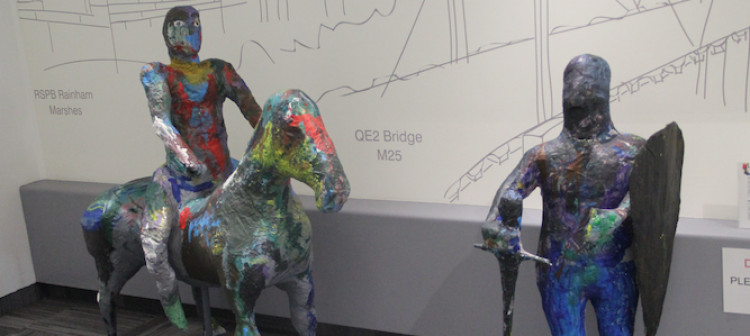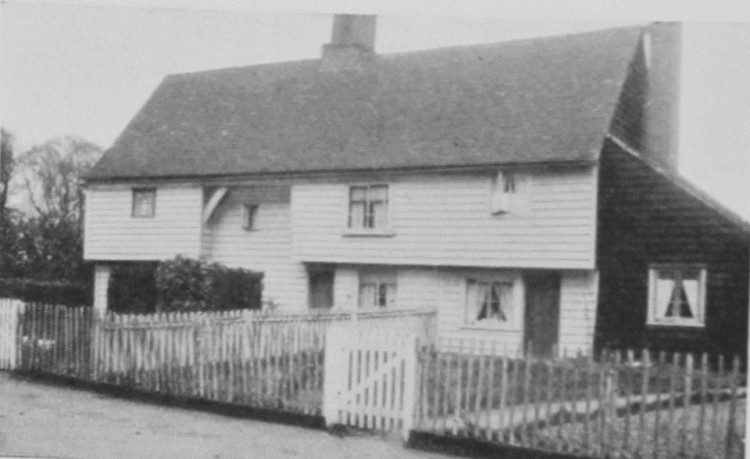Playing the name game in Thurrock
By Susan Yates - Nub News contributor 3rd May 2025
By Susan Yates - Nub News contributor 3rd May 2025

The latest in the occasional series of history features by Susan Yates, chair of Thurrock Historical Society.
WHEN I first came to Thurrock, in 1956, I thought Grays got its name from its colour, which at that time was grey due to the large amount of cement dust in the air from all the local cement works.
I did not realise that it took its name from the Lord of the Manor in 1195, Henri de Grai, a Norman knight, who was granted the manor by the king. He was remembered by a local scultor and children in 2019.

According to folklore Thurrock's name comes from Thor's Oak. Wrong!
The name comes from 'turroc' meaning the part of a ship where the rubbish collects. Quite ironic.
Most Thurrock names are of Saxon origin as indeed are most Essex names. Essex means land of the east Saxons. Middlesex is the land of the middle Saxons and Sussex the south Saxons.
In Saxon 'ing' means home. For instance; Corringham means the home of Curra's people, likewise Fobbing the home of Fobba's people and Mucking the home of Mucca's people.
In Stanford-le-Hope, Hassenbrook takes its name from Hasinghebroc as mentioned in the Domesday Book meaning 'low marshy ground of Hassa's people.' Hassa is recorded as a Saxon invader.
Aveley was formerly known as Alvithelea or Aelfgythsleah. 'Leah' means a clearing in the forest which in this case belonged to Aelfgyth, a woman, whose name means 'the gift of the fairies'.
'Dun' means hill so Ockendon is the hill belonging to Wocca or Woccasdun.
Horndon means Horn hill on the hill!
One thing for sure is that Purfleet did not get its name from Queen Elizabeth I and 'my poor fleet'. In fact it is named after a local stream known then as Purta fleet.
Tilbury did not exist until the arrival of the docks in 1886 but East and West Tilbury did, and some think they took their name from Gervaise de Tilbury. However, Tilbury is a Saxon name derived from 'Tilla' a chieftain and 'burg' meaning fort or fortified place.
Bulphan, sometimes spelt Bulvan, takes its name from 'van' meaning fort on the fen on which it stands.
Stifford is the path ford and Stanford-le-Hope is stoney ford.

Names are a fascinating source of history. 15th century timber framed Wheelers House in Fobbing gets its name from former owner Rafe Wheeler who lived there until his death in 1585.
Belhus takes its name from Belhus Manor which was named after Nicholas de Belhus who gave the manor to John Barrett as a wedding gift when he married Alicia de Belhus granddaughter of said Nicholas. He also gave his name to Ramsden Belhus.
Some place names are local nicknames like the location of the war memorial in Rectory Road, Grays known as Turps Corner after George Turp, a tenant of Mallins Farm which stood on the north side of the junction in the 1890's. Previously known as Polly Cooks corner, and still called that today by many older Grays residents. It was named after the daughter of a previous tenant of the farm who set up a school here in the 1830's.
There is a third type of name, like Mill Road, Aveley so named because it led to the post mill.
Likewise Romford Road was the way to Romford Market.
Who doesn't know the Tarpots on the A13, at Canvey, which take its name from a large house which once stood there?

The Orsett Cock roundabout like the former pub takes its name from Orsett Cock Farm.
Names are always very interesting whether surnames or place names and their history even more so.
CHECK OUT OUR Jobs Section HERE!
thurrock vacancies updated hourly!
Click here to see more: thurrock jobs
Share:
















